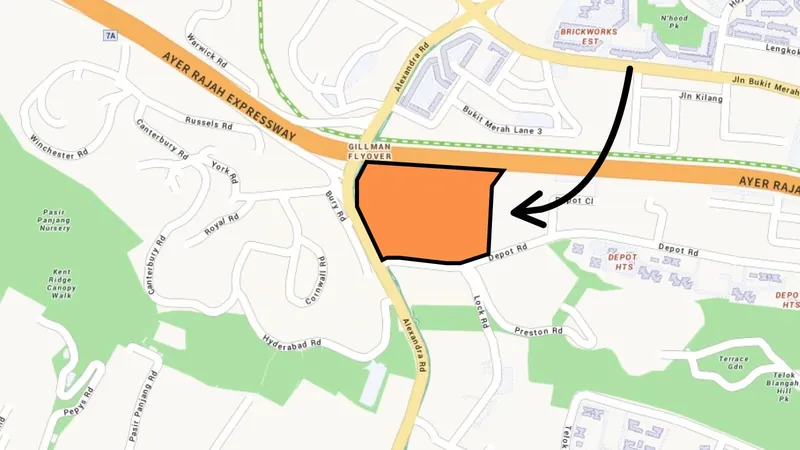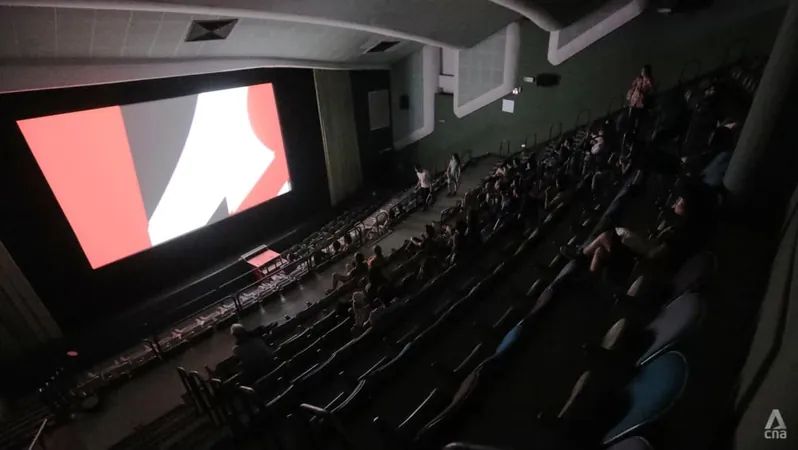
The Interlace Condo: A Case Study in Design vs. Performance
2025-07-25
Author: John Tan
The Phenomenon of The Interlace
Launched in 2009, The Interlace instantly captured attention with its audacious, Jenga-like architecture by Ole Scheeren. It not only graced magazine covers but also clinched the prestigious World Building of the Year award in 2015. This iconic project is often hailed as one of Singapore’s architectural marvels.
Mixed Performance Ratings
Despite its fame and a respectable ROI of 3.05% from 2009 to 2024, the condo's performance is far more nuanced. While it has remained among the top projects in transaction volume, it struggles when viewed through the lens of capital appreciation.
Market Variability and Recovery
The Interlace experienced price fluctuations, particularly from 2013 to 2017, coinciding with government-imposed cooling measures. By 2024, unit prices finally surpassed $1,600 per square foot, but its performance was average compared to the broader Singapore market.
Navigating Resale Trends
When examining resale transactions from 2014 to 2024, The Interlace displayed improved metrics—registering a ROI of 2.63%. However, it still fell short of the island-wide average.
A Closer Look at Neighbors
In comparison to neighboring properties, The Interlace fared decently against leasehold condos in District 4, yet many older projects like Harbour View Towers and The Anchorage have either maintained or surpassed its growth metrics. This raises questions about its long-term performance.
Profit vs. Loss Dynamics
While The Interlace recorded over 300 profitable transactions with an average gain of $400,707, it was also marked by the highest average losses among its peers—($161,947), indicating underlying risks.
Historical Context - A Bigger Picture
Even in comparison to other leasehold condos launched in the same year, The Interlace’s growth was lackluster. The comparison with older, freehold projects highlights the challenges it faces—particularly against The Anchorage, which showed superior appreciation.
Unit Size vs. Market Preferences
One fundamental issue is the size of The Interlace’s units. The larger dimensions, while appealing for space, may deter potential buyers and obscure profitability. For instance, even amongst its own unit types (2, 3, and 4-bedroom), growth rates lag behind more efficient competitors.
Layout Comparison with Neighbors
When comparing layouts, both The Interlace and The Anchorage offer competitive living spaces. However, Interlace’s units often suffer from inefficient use of space, such as awkward hallways and excess square footage that doesn't translate to higher value.
Realtor Insights and Market Sentiment
Real estate agents have pointed to The Interlace’s high unit count as a privacy concern, alongside issues with unit facings that compromise views and privacy. Despite these challenges, the project continues to attract buyers, remaining a recognizable icon.
The Verdict: Iconic but Flawed
Ultimately, while The Interlace may be an architectural landmark, it showcases a complex relationship between design and performance. The heavier unit sizes may constitute a barrier to robust capital appreciation, muddying its investment appeal. As the market shifts, observers remain hopeful that resale prices may eventually align with the value of space offered, striking a balance in this intricate property ecosystem. Understanding these nuances is essential for potential buyers and investors.



 Brasil (PT)
Brasil (PT)
 Canada (EN)
Canada (EN)
 Chile (ES)
Chile (ES)
 Česko (CS)
Česko (CS)
 대한민국 (KO)
대한민국 (KO)
 España (ES)
España (ES)
 France (FR)
France (FR)
 Hong Kong (EN)
Hong Kong (EN)
 Italia (IT)
Italia (IT)
 日本 (JA)
日本 (JA)
 Magyarország (HU)
Magyarország (HU)
 Norge (NO)
Norge (NO)
 Polska (PL)
Polska (PL)
 Schweiz (DE)
Schweiz (DE)
 Singapore (EN)
Singapore (EN)
 Sverige (SV)
Sverige (SV)
 Suomi (FI)
Suomi (FI)
 Türkiye (TR)
Türkiye (TR)
 الإمارات العربية المتحدة (AR)
الإمارات العربية المتحدة (AR)